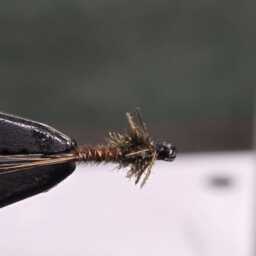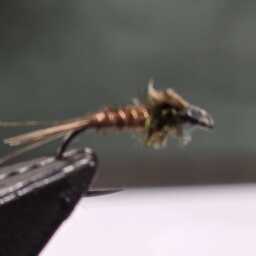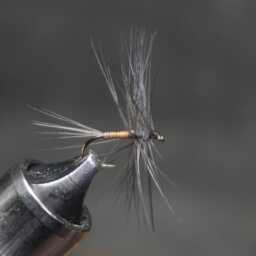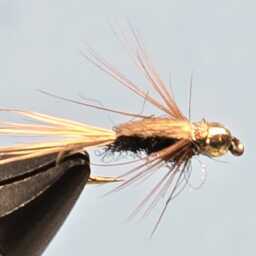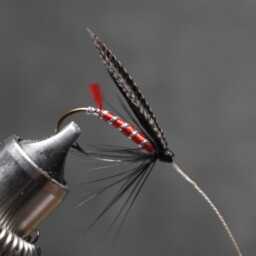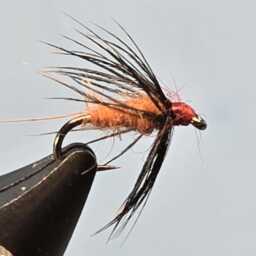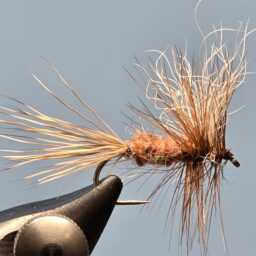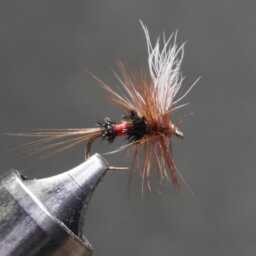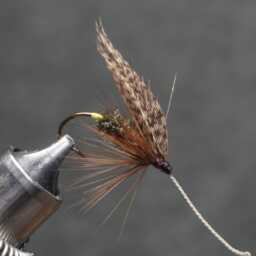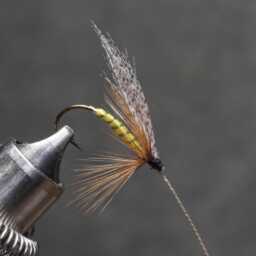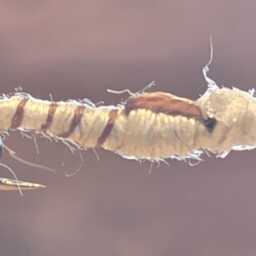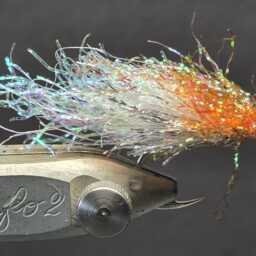Feathers from the Red-ruffed Fruitcrow are highly valued in fly tying. They are known for their brilliant fiery orange tags used in grayling flies, renowned for their durability and color retention. Historical references cite the utilization of these feathers in various fly patterns, including the Dean’s Fancy, Brunton’s Fancy, Red Tag, Black Prince, and numerous salmon flies like the Blue Goldfinch, Bo Peep, Rouge-et-Noir, Lapwing, and others, each incorporating specific feathers from the Indian Crow.
These feathers can be very difficult to obtain and have been said dollar for dollar possibly the most expensive fly tying feather to buy. On the lower end 10-12 $ per feather.
There are a few individuals that make a substitute for this feather. But are usually in very limited quantities.
The Red-ruffed Fruitcrow, known as Pyroderus scutatus in scientific terms, is a prominent member of South America’s avian population and a significant figure in the fly tying world, often referred to as the Indian Crow. This species encompasses five distinct subspecies, each marked by unique variations in plumage and size. These birds, despite their differences, provide interchangeable feathers for fly tying purposes.
Habitat:
The Red-ruffed fruit crow thrives in areas bordering the Amazonian basin in South America. Across its five subspecies, namely Pyroderus scutatus scutatus (G.R. Gray), variations in feather shape and coloration distinguish them. Fly tiers commonly use throat and ruff feathers from these subspecies interchangeably, particularly feathers from P.s. granadensis, P.s. orenocensis, and P.s. scutatus, observed in antique salmon flies.
Distinctive Feather Characteristics:
In all five subspecies, the base of red breast feathers appears black, yet subtle differences in feather shape and coloration allow for their differentiation. For instance, P.s. granadensis and P.s. scutatus feathers display a red fringe merging into reddish-orange along the stem, with P.s. granadensis feathers exhibiting a narrower red fringe, crimped tips, and darker stems compared to P.s. scutatus. Feathers from P.s. orenocensis resemble those of P.s. granadensis but often feature an orangish-brown center. Meanwhile, P.s. occidentalis showcases less vibrant red fringes, with the central portion of each feather displaying a dull orange-brown hue. Notably, P.s. masoni’s breast feathers stand out due to their crimson or blood-red tips.
« Back to Glossary Index
